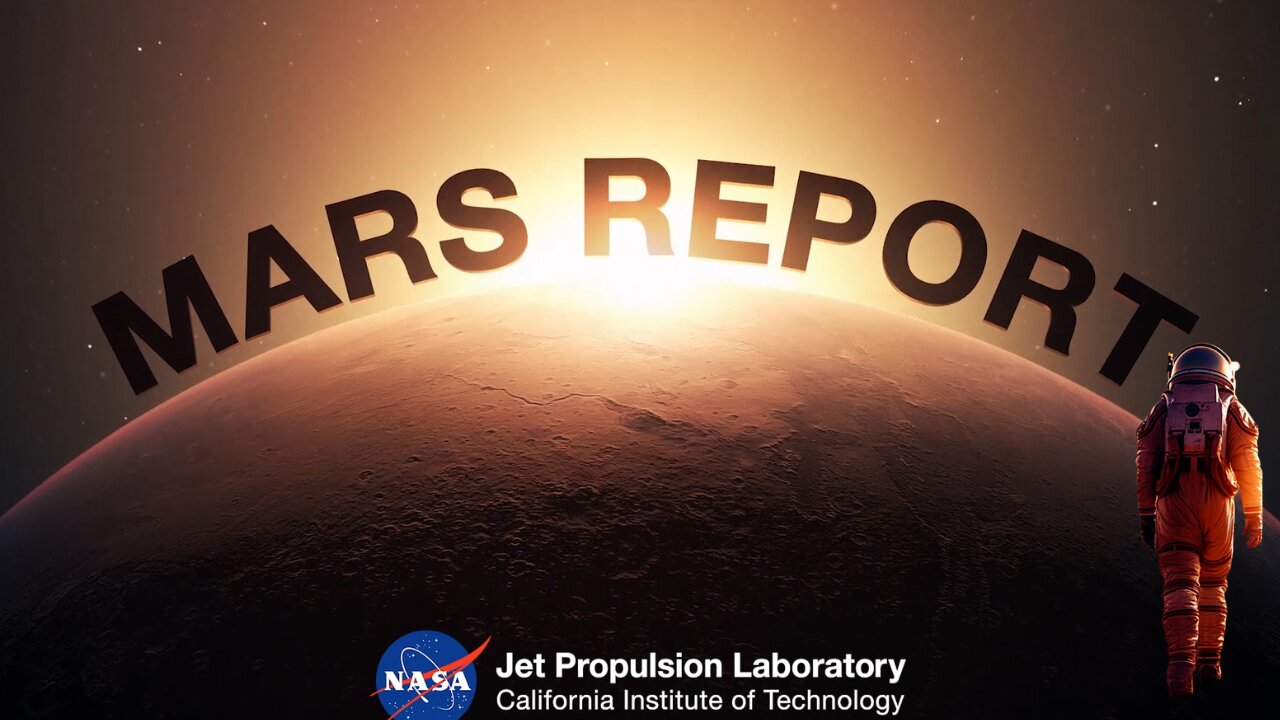Premium Only Content

How to Bring Mars Sample Tubes Safely to Earth (Mars News Report)
Bringing Mars sample tubes safely to Earth is a complex and ambitious endeavor that requires careful planning, advanced technology, and international cooperation. NASA, in collaboration with other space agencies and organizations, is currently developing a mission called the Mars Sample Return (MSR) to achieve this goal. Here are the key steps involved in bringing Mars sample tubes safely to Earth:
Sample Collection on Mars:
The first step is to collect rock and soil samples from the surface of Mars. NASA's Perseverance rover is equipped with a Sample Caching System (SCS) designed to collect and store these samples in sealed containers.
Sample Sealing and Storage:
The collected samples are sealed in specially designed containers to prevent contamination. These containers must be highly secure to ensure that Earth organisms do not contaminate the Martian samples, and Martian materials do not contaminate Earth.
Sample Retrieval and Transfer:
A future mission to Mars, which may involve another rover or robotic system, will retrieve the sealed sample containers from the storage location on Mars and transfer them to a Mars Ascent Vehicle (MAV). The MAV is designed to launch the samples into Mars orbit.
Mars Orbit Rendezvous:
Once in Mars orbit, the MAV will rendezvous with an orbiting spacecraft designed to bring the samples back to Earth. This spacecraft is called the Earth Return Vehicle (ERV).
Transfer to Earth-bound Spacecraft:
The samples are transferred from the MAV to the ERV, which is equipped with a sealed containment system to ensure that the samples remain isolated from the space environment.
Earth Return Trajectory:
The ERV is sent on a trajectory back to Earth. This trajectory must be carefully calculated to ensure that the spacecraft re-enters Earth's atmosphere safely.
Re-entry and Landing:
The ERV re-enters Earth's atmosphere, and its heat shield protects it from the intense heat generated during re-entry. The spacecraft then lands at a predetermined location, such as a remote desert or an ocean, using a parachute or other landing systems.
Sample Retrieval on Earth:
Once the ERV has landed safely, a team of scientists and engineers retrieves the sealed sample containers. These containers are transported to a specialized containment facility designed to handle potentially hazardous materials.
Sample Analysis:
Scientists analyze the Mars samples in carefully controlled environments to prevent any potential contamination. This analysis can provide valuable insights into the geology and potential signs of past life on Mars.
Sample Distribution and Research:
After analysis and research, portions of the samples may be distributed to research institutions around the world for further study.
Throughout this entire process, stringent planetary protection protocols are followed to minimize the risk of contaminating Earth with Martian materials and vice versa. International cooperation and collaboration are critical to ensure the success of the Mars Sample Return mission and the safe handling of these precious samples from another planet.
-
 LIVE
LIVE
LFA TV
14 hours agoLFA TV ALL DAY STREAM - MONDAY 8/25/25
6,596 watching -
 LIVE
LIVE
Surviving The Survivor: #BestGuests in True Crime
43 minutes agoLIVE Court: Wendi Adelson Testifies Against Mom, Donna Adelson, in Dan Markel's Murder Trial
388 watching -
 LIVE
LIVE
JuicyJohns
1 hour ago $0.05 earned🟢#1 REBIRTH PLAYER 10.2+ KD🟢
147 watching -
 1:14:57
1:14:57
JULIE GREEN MINISTRIES
3 hours agoRUSSIA IS ABOUT TO RELEASE SOMETHING THAT WILL CRUSH THE ESTABLISHMENT
65.5K139 -
 LIVE
LIVE
GritsGG
1 hour agoWin Streaking! Coloring Hair @11AM PST~ Most Wins 3435+ 🧠
51 watching -
 DVR
DVR
Welcome to the Rebellion Podcast
20 hours ago $0.03 earnedMonday Funday - WTTR Podcast Live 8/25
12.2K1 -
 1:21:24
1:21:24
Game On!
16 hours ago $0.06 earnedTom Brady And The Las Vegas Raiders ARE BACK! 2025 NFL Preview!
30.7K1 -
 LIVE
LIVE
The Bubba Army
2 days agoShould RaJa Jackson Be Arrested? - Bubba the Love Sponge® Show | 8/25/25
1,789 watching -
 LIVE
LIVE
FyrBorne
15 hours ago🔴Warzone M&K Sniping: Builds So Strong They Think I'm Hacking
203 watching -
 2:01:48
2:01:48
BEK TV
3 days agoTrent Loos in the Morning - 8/25/2025
29.2K